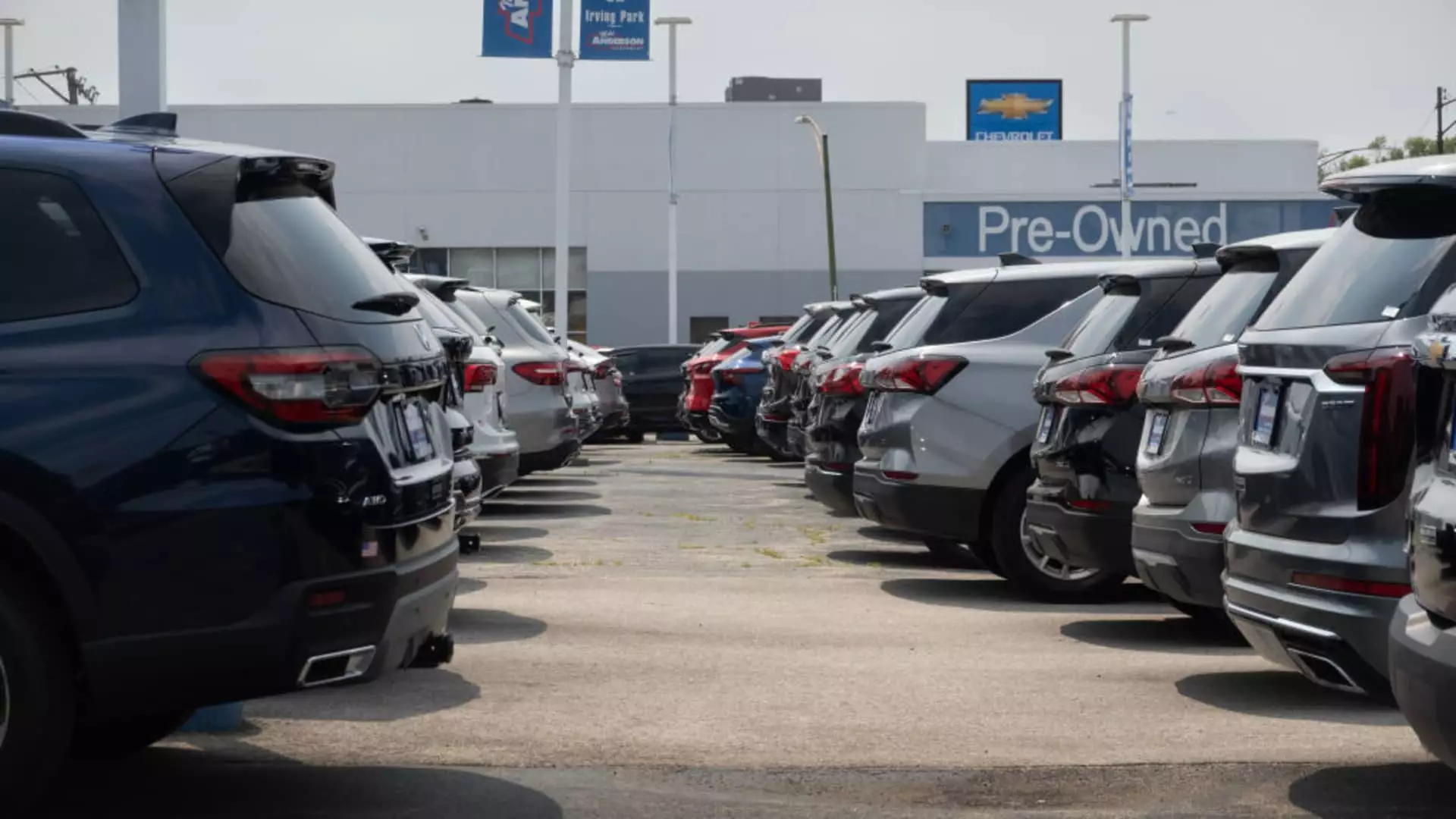The issue of upside-down auto loans has reached a concerning high in the United States, as more consumers find themselves in a precarious financial situation. A recent report by Edmunds.com reveals that the average amount owed on these underwater loans has surged to an unprecedented $6,458 by the end of the third quarter. This figure represents a notable increase from $6,255 in the prior quarter and $5,808 a year earlier. While an average debt of a couple of thousand dollars over the worth of a car may seem manageable, the rising trend indicates deeper financial pressures affecting American households.
The growing prevalence of negative equity in auto loans serves as a barometer for consumer financial health. The Federal Reserve recently highlighted a notable increase in delinquency rates for auto loans, surpassing the figures seen before the COVID-19 pandemic. These rates had previously plummeted during the pandemic due to altered purchasing behaviors and economic volatility. However, the current data suggests that many consumers may be struggling to keep up with their obligations, leading to defaults and further exacerbating the cycle of debt.
Jessica Caldwell, Edmunds’ head of insights, emphasizes that while owing a small amount on a depreciating asset is not catastrophic, the alarming statistic that over 20% of consumers are burdened with negative equity of $10,000 or more reveals a troubling trend. This issue particularly affects those who find themselves trapped in high-interest loans or who made hasty purchasing decisions during the market’s volatility.
The dynamics of today’s auto financing landscape create an environment where many consumers may unwittingly contribute to their financial instability. The current trend is largely attributed to the purchasing spree of new vehicles during 2021 and 2022, a period characterized by limited inventories due to global supply chain disruptions. Buyers often paid inflated prices, and as the market began to normalize, the rapid depreciation of these vehicles left many consumers with loans that exceed their car’s value.
Experts from Edmunds urge consumers to reassess their ownership patterns, particularly those opting for lengthy seven-year financing plans. Ivan Drury, the company’s director of insights, points out that for consumers with less stable financial plans, such extended loans can inevitably lead to negative equity situations. This fact highlights the importance of thoughtful budgeting and long-term financial commitments in vehicle purchasing decisions.
So what can consumers do to navigate this challenging landscape? One suggested approach is to retain ownership of their vehicles for extended periods, which can help mitigate the risks associated with negative equity. Additionally, maintaining regular upkeep can prevent further losses in value, thus protecting the investment in the vehicle.
Furthermore, as interest rates and vehicle prices continue to rise, consumers are encouraged to consider not only affordability in terms of monthly payments but also the overall cost of ownership. Transparency with oneself about vehicle usage and long-term plans becomes vital in avoiding the pitfalls of negative equity.
While the reality of upside-down loans can feel daunting, understanding the underlying factors and proactively addressing personal financial habits can help mitigate the risks associated with these concerning trends.

